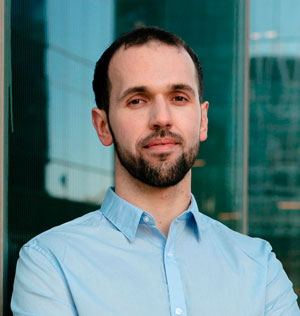Don't see an advisor you admire? Let's add him to the database! - Request
.JPG)
Smartbits - Attention: Bottom-Up vs Top-Down. A Lesson from Adam Gazzaley
Adam Gazzaley (neuroscientist, author, photographer, entrepreneur, and inventor) admits there are many ways to define attention. One way is to think about it in two categories: bottom-up attention and top-down attention. He describes them as:
Bottom-up attention is when your limited mental resources are being drawn or activated by the environmental stimuli. A loud sound, a flash of light, your name, something that is important or salient to you will demand your attention and pull your resources towards it very rapidly.
Top-down attention - the goal-directed attention. It is when you make a conscious decision, based on interpreting the information from either the external environment or internal environment about where your attention is directed.
According to professor Gazzaley, bottom-up attention is a strong evolutionary survival advantage. It is a very ancient part of our attention system that was critical for our survival.
The sight of a predator lurking behind the bush would lead our ancestors to drop everything and focus entirely on survival. Nowadays, a distraction of similar intensity can be caused by a push notification.
In the 21st century, being governed by the bottom-up type of attention is often not the most desirable. So…
Adam Gazzaley provides plenty of modern solutions in his book The Distracted Mind.
My take:
When it comes to top-down attention, we can think about it as the product of focus, self-organization, grit, and emotional maturity. It is the ability to generate a cohesive plan of action and carry out the tasks highly productive and disciplined way. Bottom-up attention treats us like a horse carriage with no driver. Emotions and momentary whims govern the horse.
When I came across this concept, I questioned whether there is anything new to this idea as compared to the terms like proactive vs. reactive, focused vs. distracted, or being in control versus being overwhelmed. I have come to the realization that the categorization put forth by Gazzeley makes a lot more sense in practice because it is easier to think about the origin of our attention than about the reasons for our distractedness and confusion.
In Practice - Be Observant and Keep Asking Yourself “The Question”
Ask yourself where your attention is and why. Is it preoccupied with the actions that are pushed from the automatic “below” or the conscious “above?” Doing so can lead to sudden realizations and hopefully corrective actions. It is best to catch yourself before you are a few hours deep into a YouTube rabbit hole, wondering how did you end up watching something you don’t even care about.
Links and ways to follow-up for the curious:
Making Sense with Sam Harris - #226 - THE PRICE OF DISTRACTION A Conversation with Adam Gazzaley

